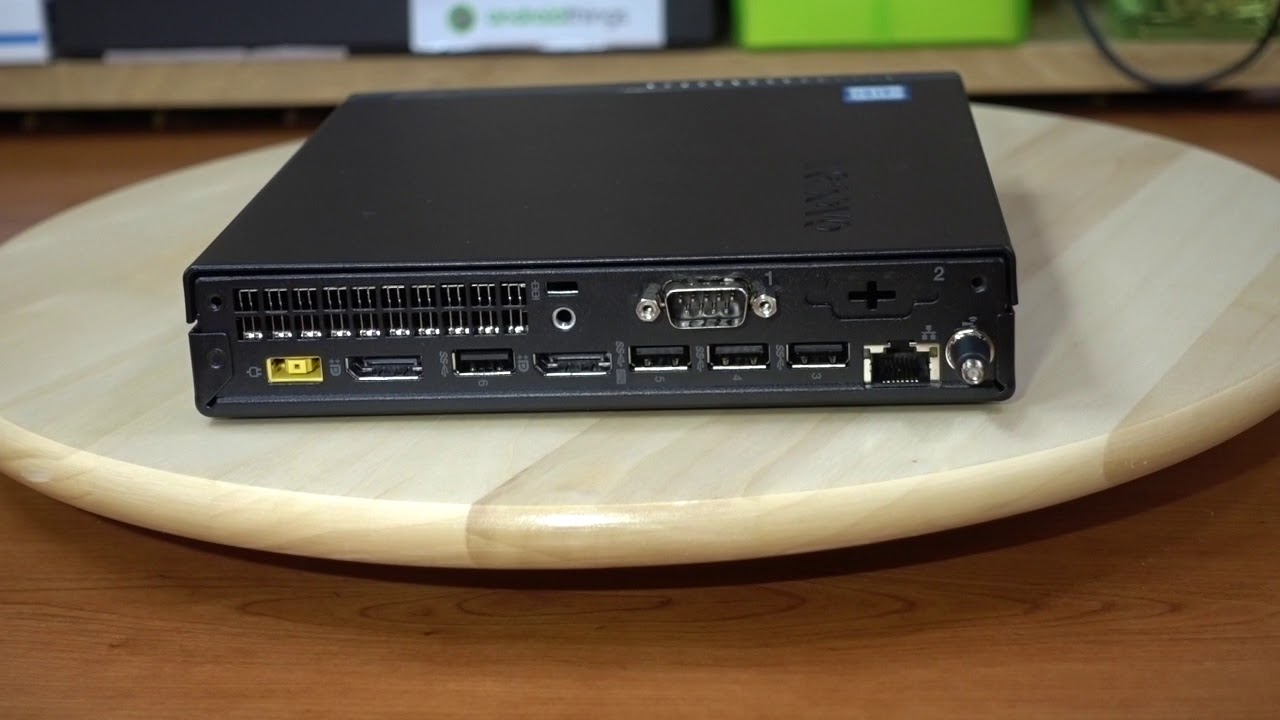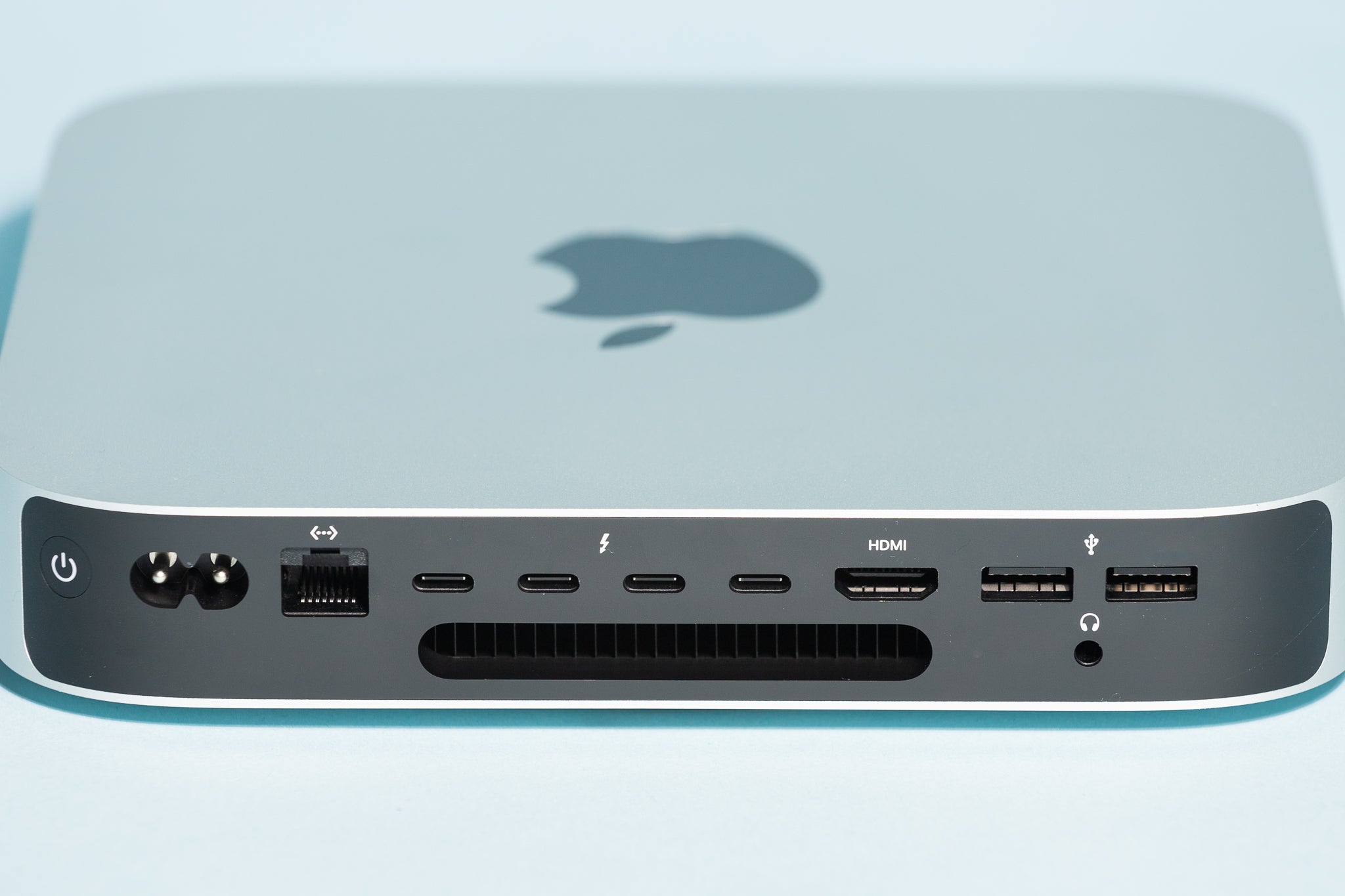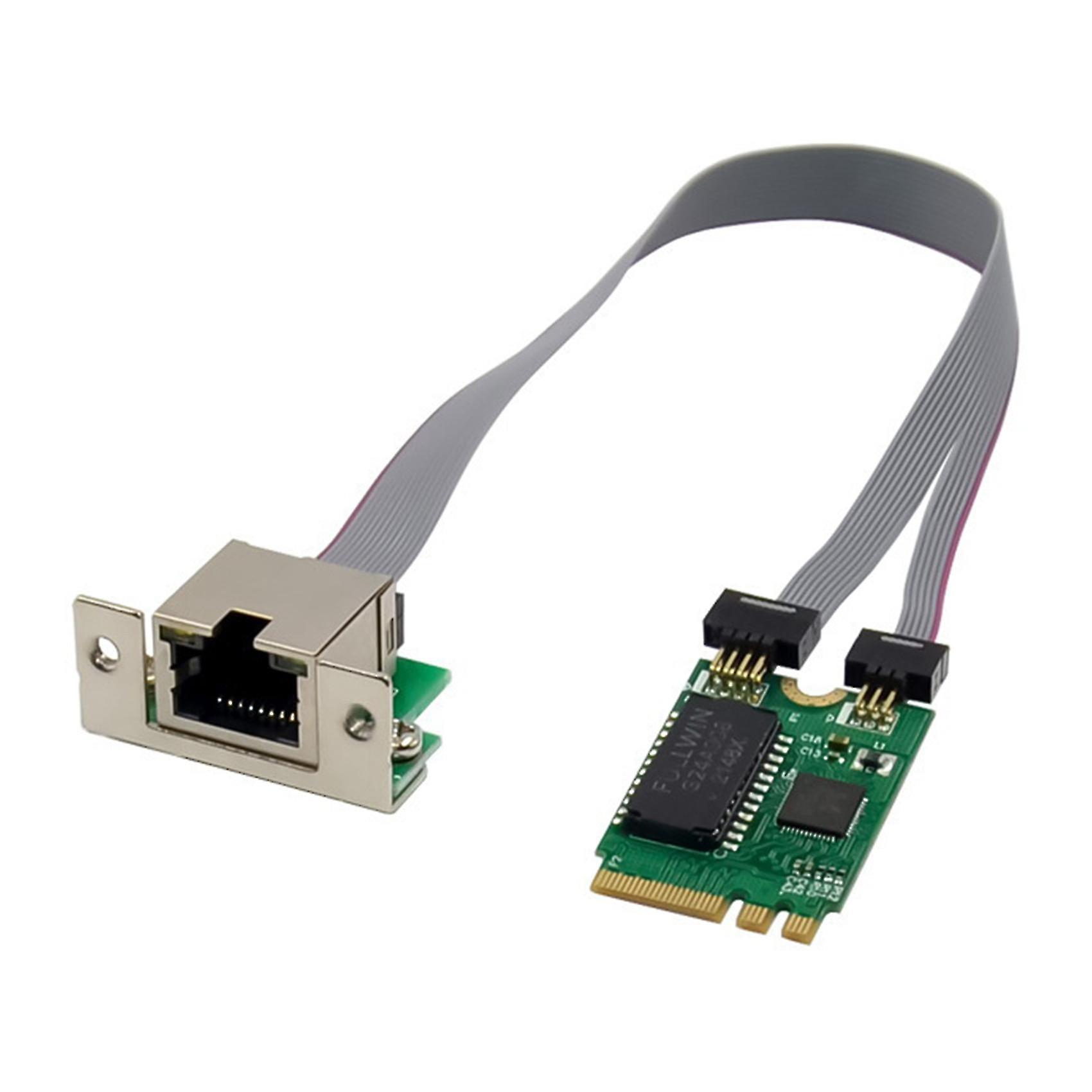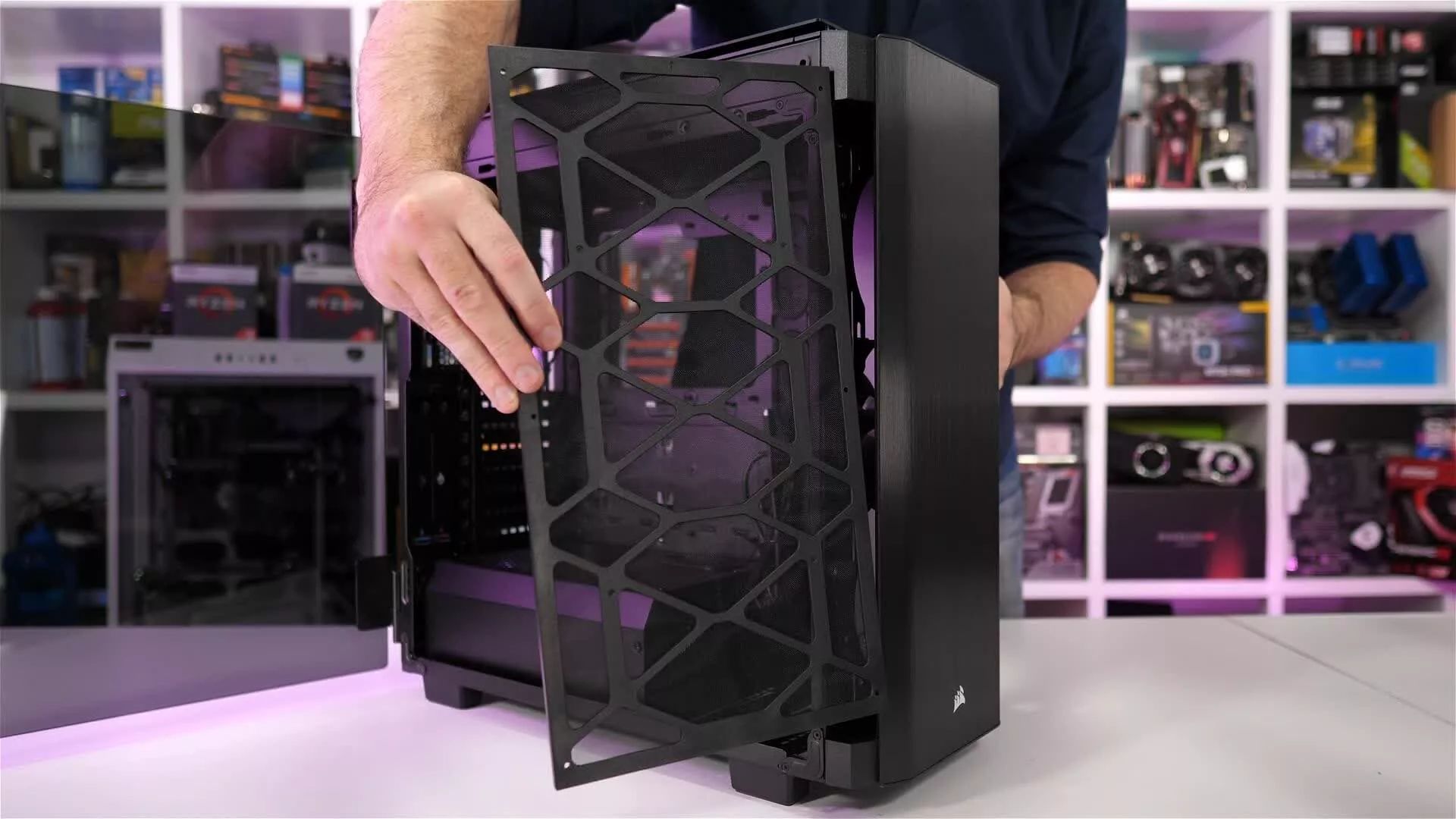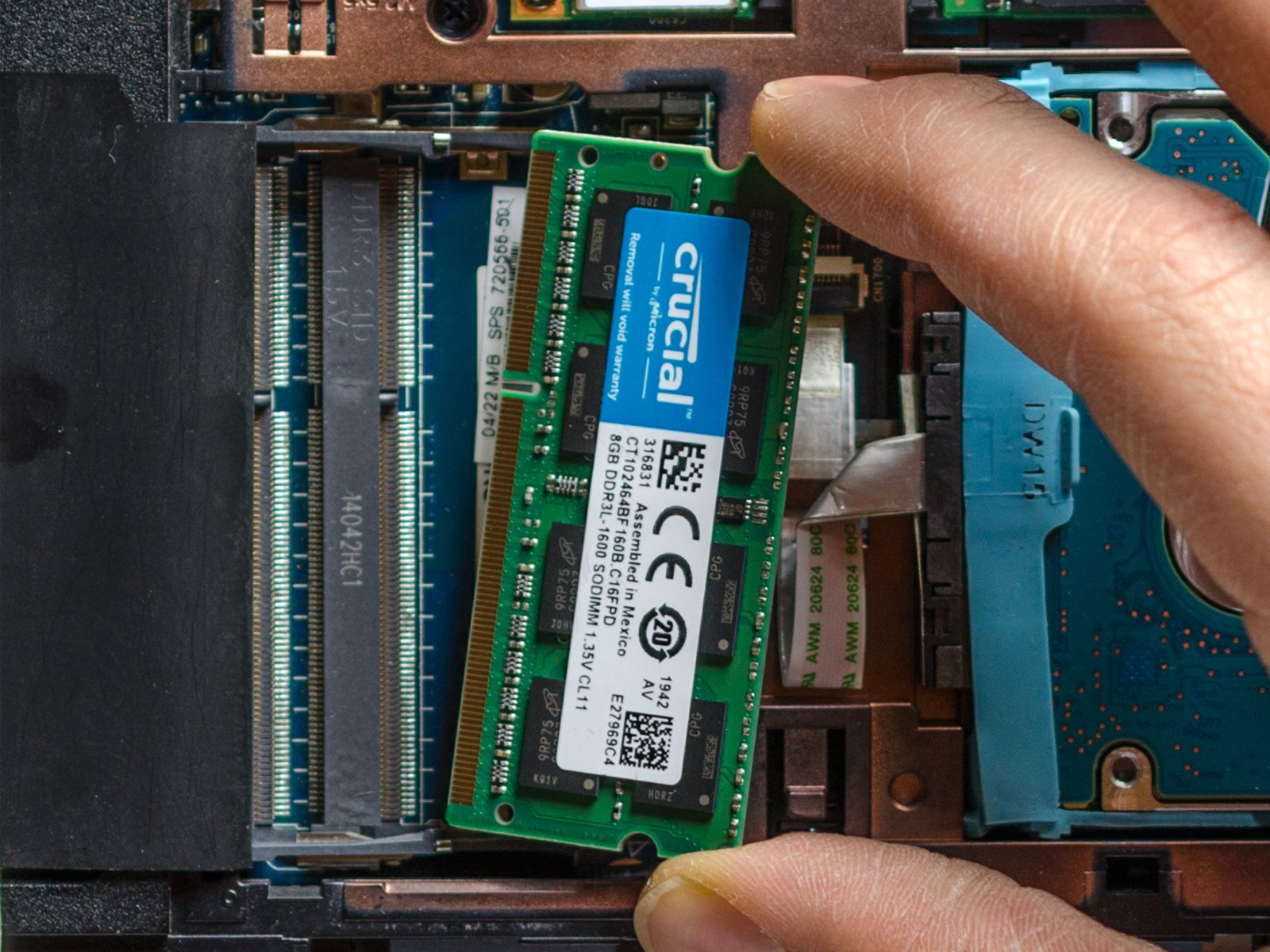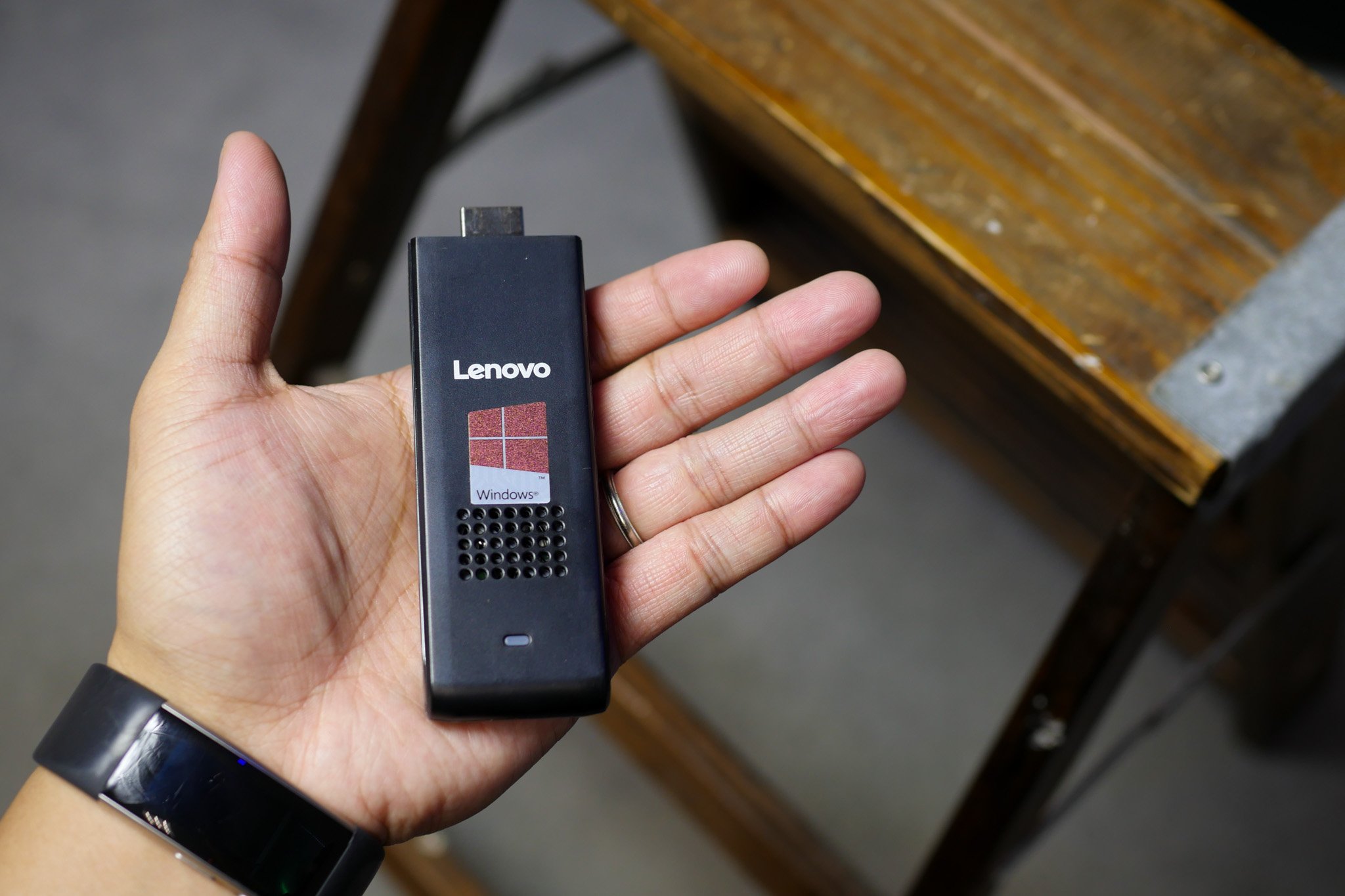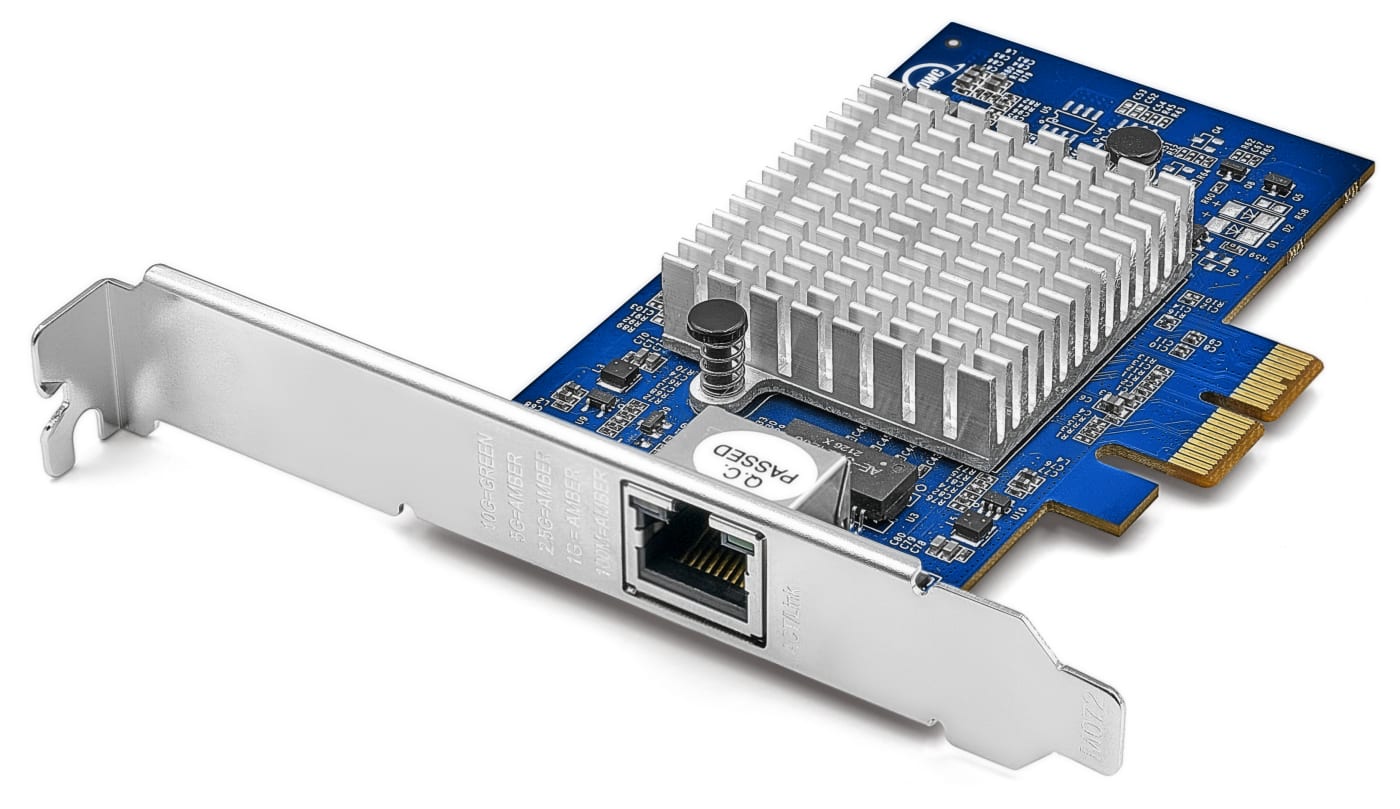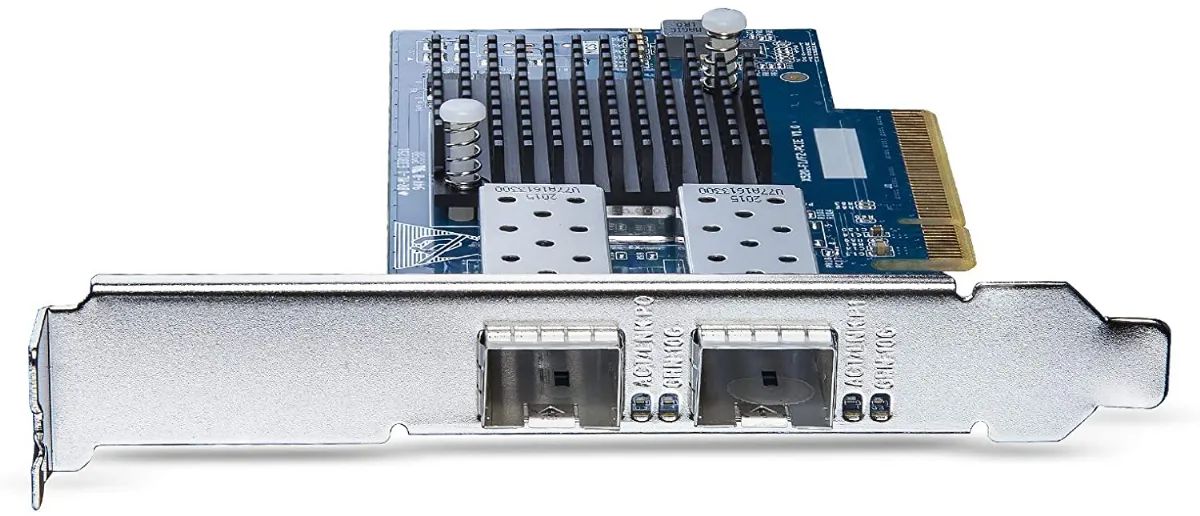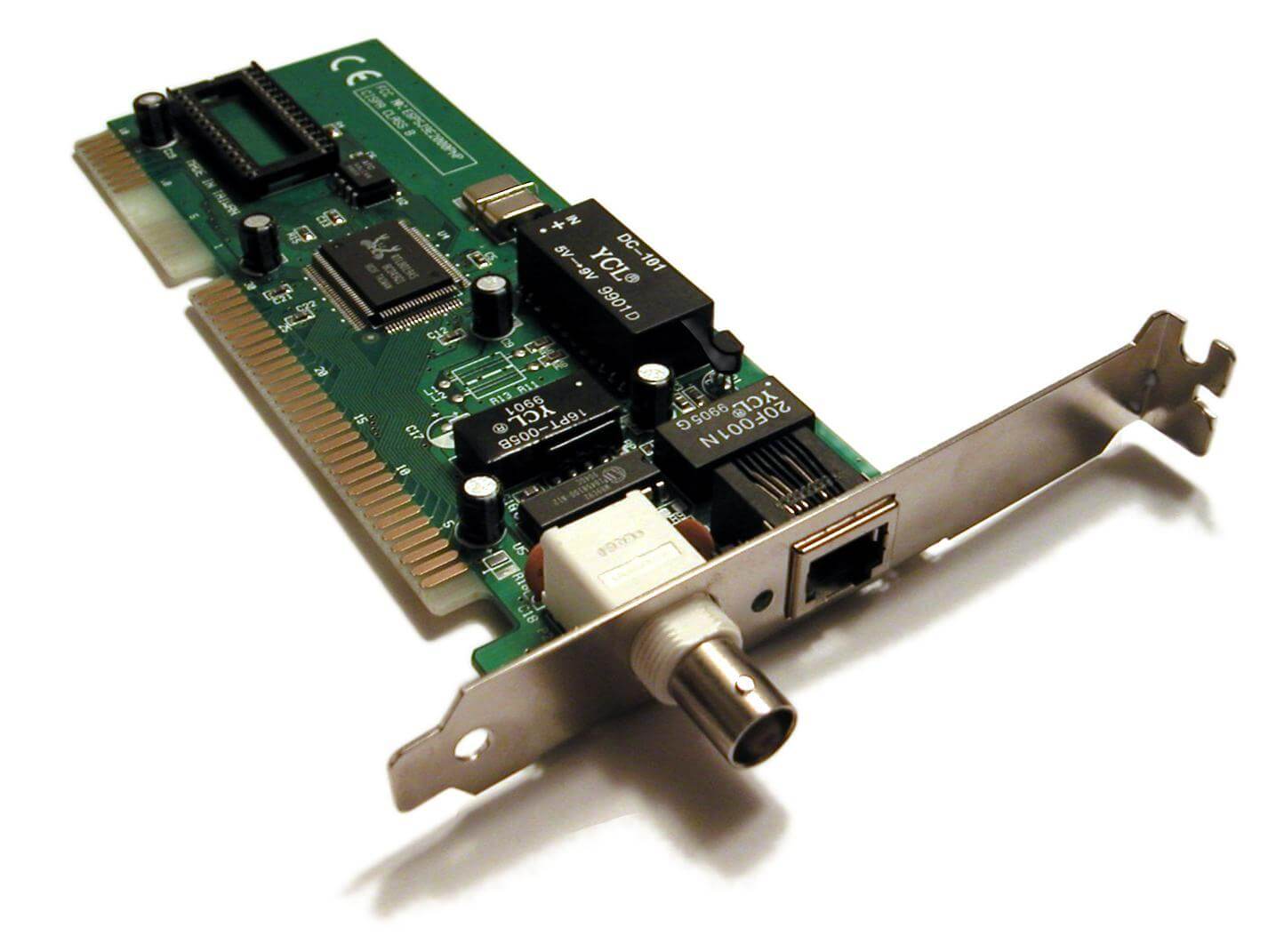Introduction
A Mini PC, also known as a compact or small form factor PC, is a versatile hardware solution that packs the power of a traditional computer into a smaller and more portable package. These compact machines are popular among users who require a space-saving option without sacrificing performance.
While a Mini PC typically comes with built-in network connectivity, there are situations where adding a second Network Interface Card (NIC) can be beneficial. By adding a second NIC, you can expand the networking capabilities of your Mini PC, allowing for more advanced networking configurations, such as creating a dedicated connection for specific tasks or implementing a dual-homed network setup.
In this guide, we will walk you through the steps to add a second NIC to your Mini PC. Whether you are a tech enthusiast looking to expand your networking options or a professional needing additional network connectivity for specific tasks, this guide will provide you with the necessary information to successfully install and configure a second NIC.
We will cover everything from determining the type of NIC that suits your needs, to the installation process, and finally, configuring the second NIC to ensure it functions correctly. By following these steps, you will be able to enhance the versatility and capabilities of your Mini PC when it comes to networking.
What is a Mini PC?
A Mini PC is a compact and portable computer that is designed to provide the functionality of a traditional desktop computer in a smaller form factor. These miniature machines are becoming increasingly popular due to their versatility, power efficiency, and space-saving benefits.
Mini PCs are typically much smaller and lighter than traditional desktop computers, making them ideal for users who require a portable computing solution. They are often used in scenarios where space is limited, such as dorm rooms, small offices, or home entertainment setups. Additionally, Mini PCs are a popular choice for digital signage, kiosks, and other dedicated-purpose applications.
Despite their small size, Mini PCs offer excellent performance capabilities. They are equipped with powerful processors, ample memory, and storage options, ensuring that users can tackle demanding tasks such as multimedia editing, gaming, and even virtualization. Some models also support discrete graphics cards, further enhancing their gaming and graphics rendering capabilities.
Another advantage of Mini PCs is their power efficiency. Due to their compact size, Mini PCs consume less power compared to traditional desktop computers, resulting in lower energy bills and a reduced carbon footprint. This makes them an environmentally friendly choice for users who are conscious of energy consumption.
Mini PCs also offer a wide range of connectivity options. They typically come equipped with USB ports, HDMI or DisplayPort outputs, Ethernet ports, and wireless connectivity, allowing for easy connection to peripherals and networking devices. Additionally, most Mini PCs also feature built-in Wi-Fi and Bluetooth capabilities, further enhancing their flexibility.
In summary, a Mini PC is a compact and portable computer that provides excellent performance, power efficiency, and a wide range of connectivity options. Their small form factor makes them ideal for users who require a space-saving solution without compromising on performance. Whether you need a compact desktop for office tasks, multimedia editing, or gaming, a Mini PC can meet your needs with its versatility and power.
Why Add a Second NIC?
While Mini PCs come with built-in network connectivity, there are several reasons why you might consider adding a second Network Interface Card (NIC) to your Mini PC:
- Increased Network Bandwidth: Adding a second NIC allows you to create a separate network connection, effectively doubling your network bandwidth. This can be beneficial for tasks that require high network throughput, such as file transfers, streaming media, or hosting a server.
- Network Segmentation: By adding a second NIC, you can separate different network segments, ensuring that traffic from one segment does not interfere with another. This can improve network performance and security by isolating specific devices or services.
- Network Redundancy: In a mission-critical environment, having a second NIC can provide network redundancy. If one network connection fails, the other NIC can seamlessly take over, ensuring uninterrupted network communication.
- Virtualization and Lab Testing: If you use your Mini PC for virtualization or lab testing purposes, a second NIC can be incredibly useful. It allows you to create virtual networks, simulate different network topologies, and test network configurations without impacting your main network environment.
- Different Network Configurations: Some specific networking scenarios and configurations, such as dual-homed networks or specialized network setups, require multiple NICs. Adding a second NIC gives you the flexibility to implement these advanced networking configurations.
It’s important to note that the decision to add a second NIC to your Mini PC depends on your specific needs and requirements. If you find yourself in one of the situations mentioned above or require additional network capabilities, adding a second NIC can greatly enhance your Mini PC’s networking capabilities.
Step 1: Determine the Type of NIC to Add
Before you can add a second Network Interface Card (NIC) to your Mini PC, you need to determine the type of NIC that suits your needs. There are several factors to consider when choosing a NIC:
- Connection Type: Decide if you need a wired or wireless NIC. If you require a wired connection, consider whether you need a Gigabit Ethernet (1 Gbps) or a 10 Gigabit Ethernet (10 Gbps) NIC. For wireless connectivity, check if your Mini PC has available slots or compatibility with wireless NICs.
- Form Factor: Mini PCs typically have limited space, so it’s important to choose a NIC that fits within the available space. Common form factors include PCIe (PCI Express) and Mini PCIe. Check your Mini PC’s specifications to determine which form factors are supported.
- Compatibility: Ensure that the NIC is compatible with your Mini PC’s operating system. Check the manufacturer’s specifications or consult your Mini PC’s documentation to verify compatibility.
- Features and Performance: Consider the features you require, such as wake-on-LAN support, jumbo frame support, or VLAN support. Additionally, check the NIC’s performance specifications, such as maximum transfer rates or latency, to ensure it meets your network requirements.
- Budget: Set a budget for your NIC purchase. NICs range in price depending on their features and capabilities. Consider your needs and budget constraints to find a NIC that strikes the right balance.
Once you have determined the type of NIC that suits your needs, you can proceed to the next step: purchasing the NIC. Take the time to research different NIC models, read reviews, and compare prices to ensure you make an informed decision.
Remember, choosing the right NIC is crucial for the compatibility and performance of your Mini PC. Therefore, it’s important to carefully consider the factors mentioned above before making your purchase.
Step 2: Purchase the NIC
Once you have determined the type of Network Interface Card (NIC) that suits your needs, it’s time to purchase the NIC. Follow these steps to ensure a smooth purchasing process:
- Research: Take the time to research different brands and models of NICs that meet your requirements. Read reviews, compare prices, and consider the reputation and reliability of the manufacturer.
- Compatibility: Verify the compatibility of the NIC with your Mini PC. Check the Mini PC’s documentation or consult the manufacturer’s website to ensure that the NIC is compatible with your specific Mini PC model and operating system.
- Consider Performance: Assess the performance specifications of the NIC, such as data transfer rates, latency, and advanced features. Ensure that the NIC’s capabilities align with your networking needs for optimal performance.
- Shop at Trusted Retailers: Purchase the NIC from reputable and trusted retailers. This ensures that you receive a genuine product and provides reliable customer support and return options if needed.
- Price Comparison: Compare prices of the NIC from different retailers to find the best deal. Keep in mind that the cheapest option may not always be the best, so consider the overall value and reputation of the seller.
- Check Warranty: Review the warranty details of the NIC. Look for a product with a generous warranty period or additional support options to protect your investment.
- Place Your Order: Once you have made your decision, proceed to purchase the NIC. Follow the retailer’s instructions for placing an order, providing shipping information, and making the payment.
After purchasing the NIC, it’s important to keep the order confirmation and any relevant documentation. This will be useful for warranty claims or if you need to contact customer support in the future.
By following these steps, you can ensure a successful and informed purchase of the Network Interface Card for your Mini PC. With the NIC in your possession, you are one step closer to expanding the networking capabilities of your Mini PC.
Step 3: Prepare the Mini PC for Installation
Before installing the second Network Interface Card (NIC) on your Mini PC, it’s important to prepare the Mini PC for the installation process. Follow these steps to ensure a smooth installation:
- Power Off and Disconnect: Turn off your Mini PC and disconnect it from any power source. This step is crucial to prevent any electrical damage during the installation process.
- Open the Mini PC Case: If your Mini PC has a removable case or cover, carefully remove it to gain access to the internal components. Refer to your Mini PC’s documentation or manufacturer’s website for specific instructions on how to open the case.
- Identify Available Expansion Slots: Take note of the available expansion slots in your Mini PC, such as PCIe or Mini PCIe slots. These slots are typically used for adding additional hardware components, such as NICs. Ensure that you have an available slot that is compatible with the NIC you purchased.
- Handle with Care: When handling the NIC, make sure to touch a grounded metal object or use an anti-static wrist strap to discharge any static electricity and prevent potential damage to the sensitive components.
- Prepare the Slot: If the expansion slot has a cover or protector, remove it carefully. The slot should be clean and free of any debris before inserting the NIC.
- Verify Proper Orientation: Before inserting the NIC into the slot, ensure that you have identified the correct orientation. Align the NIC’s connector with the corresponding slot and gently insert it straight into the slot.
- Secure the NIC: Once the NIC is fully inserted, secure it in place using any screws or brackets that may be provided with your Mini PC or the NIC itself. This will ensure that the NIC remains firmly attached and stable within the Mini PC.
- Connect Power and Cables: Reconnect any power cables or peripheral cables that were disconnected during the installation process. Double-check the connections to ensure they are secure and properly seated.
- Close the Mini PC Case: Once all connections are reestablished, carefully close the Mini PC case or cover, making sure it is securely fastened. This will protect the internal components from dust and other potential hazards.
With your Mini PC now prepared for the installation, you are ready to proceed to the next step: installing the NIC. Following these steps will help ensure a successful installation process and prevent any damage to your Mini PC or the network hardware.
Step 4: Install the NIC
Now that you have prepared your Mini PC for installation, it’s time to install the second Network Interface Card (NIC). Follow these steps to properly install the NIC:
- Locate the NIC Slot: Identify the correct slot where your NIC will be installed. Refer to the Mini PC’s documentation or manufacturer’s website for the precise location.
- Insert the NIC: Carefully align the NIC’s connector with the slot on the Mini PC’s motherboard. Ensure proper orientation and gently insert the NIC into the slot with a smooth but firm pressure. Avoid using excessive force.
- Secure the NIC: Use the screws or brackets provided with the Mini PC or the NIC itself to secure the NIC in place. This will prevent any unintentional movement or disconnection of the card.
- Double-check Connections: Once the NIC is securely installed, double-check all connections surrounding the NIC. Ensure that no cables or other components are obstructing the NIC or causing strain on the connections.
- Replace Case or Cover: If you removed the Mini PC’s case or cover earlier, carefully reattach it. Ensure that it is properly aligned and securely fastened to maintain the integrity of the Mini PC’s enclosure.
- Power On the Mini PC: Connect the Mini PC to the power source and turn it on. The operating system should detect the newly installed NIC automatically.
- Install Drivers: Depending on the operating system, you may need to install drivers for the NIC. Check the manufacturer’s website for the latest drivers compatible with your Mini PC and operating system. Follow the installation instructions provided by the manufacturer.
- Verify NIC Recognition: Once the drivers are installed, verify that the operating system recognizes the NIC. Check the device manager or network settings to ensure the NIC is detected without any errors.
By following these steps, you can successfully install the second NIC on your Mini PC. It’s essential to handle the NIC with care and ensure proper alignment and secure installation to avoid any damage to the Mini PC or the NIC itself. With the installation complete, you can now proceed to the next step: connecting the network cables.
Step 5: Connect the Network Cables
After successfully installing the second Network Interface Card (NIC), the next step is to connect the necessary network cables. Follow these steps to ensure a proper connection:
- Identify the NIC Ports: Locate the ports on the newly installed NIC. These ports may vary depending on the specific NIC model but are typically labeled.
- Select the Ethernet Cable: Depending on your network setup and requirements, choose the appropriate Ethernet cable. Common types include Cat5e, Cat6, or Cat6a cables, which provide different levels of performance and speeds.
- Connect the Ethernet Cable: Take one end of the selected Ethernet cable and firmly insert it into the Ethernet port on the NIC. Ensure that the cable is plugged in securely and fully inserted into the port.
- Connect the Other End: Connect the other end of the Ethernet cable to the corresponding port on your network switch, router, or another networking device. Again, make sure the cable is securely connected.
- Repeat for Additional Connections: If you have multiple network cables to connect, repeat the steps above for each cable, ensuring that each cable is connected to the correct port on both the NIC and the networking device.
- Verify Connectivity: Once all the network cables are connected, verify the connectivity status by checking the network settings or using network testing tools. Ensure that the NIC is recognized and that there is a valid network connection.
It is important to note that the specific ports and cables used may vary depending on the NIC model and your specific network setup. Always refer to the documentation provided by the manufacturer for detailed instructions on the proper connection procedures.
By following these steps, you can successfully connect the network cables to your second NIC, ensuring a stable and reliable network connection. Proceed to the next step to learn how to configure the second NIC to function correctly.
Step 6: Configure the Second NIC
After connecting the network cables to the second Network Interface Card (NIC), it’s time to configure the NIC to ensure proper functionality. Follow these steps to configure the second NIC:
- Access Network Settings: Open the network settings on your operating system. This can typically be done by navigating to the Control Panel or System Preferences and selecting the “Network” option.
- Select the Second NIC: In the network settings, locate the list of available network interfaces. Look for the newly installed second NIC and select it as the active network interface.
- Configure IP Address: Depending on your network setup, you may need to configure the IP address settings for the second NIC. Select the option to manually configure the IP address and enter the appropriate values provided by your network administrator or obtained through your network configuration.
- Configure DNS: Enter the appropriate DNS (Domain Name System) server addresses for the second NIC. These addresses can be obtained from your network administrator or from your internet service provider.
- Configure Additional Settings: Depending on your network requirements, you may need to configure additional settings, such as subnet masks, default gateways, and advanced network settings. Consult your network administrator or refer to the network documentation for guidance.
- Save and Apply Changes: Once you have configured the necessary settings for the second NIC, ensure to save and apply the changes in the network settings. This will make the configurations take effect and activate the second NIC.
- Test Connectivity: After configuring the second NIC, test the connectivity by accessing the internet or other network resources. Verify that the second NIC is functioning correctly and able to establish network connections.
It’s important to note that the configuration steps may vary depending on the operating system and network setup. Consult the documentation provided by the manufacturer or seek guidance from your network administrator if you encounter any difficulties during the configuration process.
By following these steps, you can successfully configure the second NIC on your Mini PC. A properly configured NIC will allow you to utilize its networking capabilities effectively and achieve the desired network configurations and performance.
Step 7: Test the Connection
After configuring the second Network Interface Card (NIC) on your Mini PC, the final step is to test the network connection. This step ensures that the second NIC is functioning correctly and establishes a stable and reliable network connection. Follow these steps to test the connection:
- Verify Network Status: Check the network settings on your operating system to ensure that the second NIC is recognized and active. Verify that the IP address, subnet mask, default gateway, and DNS server settings are configured correctly.
- Ping Test: Open a command prompt or terminal and perform a ping test. Ping a known IP address or domain name to check if there is a response. This test can help verify the network connectivity and ensure that the second NIC is able to communicate with other devices on the network.
- Network Resource Access: Access network resources, such as shared files or network drives, to confirm that the second NIC is able to connect to and access these resources successfully.
- Internet Access: Open a web browser and visit various websites to test internet connectivity through the second NIC. Ensure that web pages load properly and that there are no issues with browsing or accessing online services.
- Bandwidth and Speed Test: Use online tools or applications to conduct bandwidth and speed tests. This test helps determine the network performance of the second NIC and ensures that it is providing the expected transfer speeds.
- Continuous Monitoring: Keep an eye on the network connection over an extended period. Monitor for any drops in connectivity, slow speeds, or other issues that may arise with the second NIC. This can help identify and troubleshoot potential network problems.
By performing these tests, you can ensure that the second NIC is functioning properly, providing a stable and reliable network connection. If any issues arise during the testing phase, review the network settings, consult the documentation, or seek assistance from your network administrator or the NIC manufacturer.
With the successful completion of the connection testing, you have successfully added and configured a second NIC on your Mini PC. Enjoy the enhanced networking capabilities and take advantage of the expanded options that the second NIC provides!
Conclusion
Adding a second Network Interface Card (NIC) to your Mini PC can greatly expand its networking capabilities and provide a range of benefits. Throughout this guide, we covered the steps involved in adding and configuring a second NIC on your Mini PC, including determining the type of NIC to add, purchasing the NIC, preparing the Mini PC for installation, installing the NIC, connecting the network cables, configuring the second NIC, and testing the connection.
By following these steps, you can successfully enhance the versatility and functionality of your Mini PC when it comes to networking. Whether you need increased network bandwidth, network segmentation, network redundancy, or specialized network configurations, the addition of a second NIC will provide you with the flexibility to meet these requirements.
Remember to handle the NIC with care during installation, ensuring correct orientation and secure attachment to prevent any damage to your Mini PC or the NIC itself. Take the time to configure the second NIC with the appropriate network settings and verify its connectivity through various tests to ensure a stable and reliable network connection.
Keep in mind that the specific steps and procedures may vary depending on the Mini PC model, the NIC manufacturer, and your network setup. Always refer to the documentation provided by the manufacturer and consult with your network administrator if needed.
With a properly installed and configured second NIC, you can enjoy improved network performance, network segmentation, redundancy, and the ability to create advanced network configurations. Take advantage of the expanded networking capabilities and make the most out of your Mini PC’s potential.







